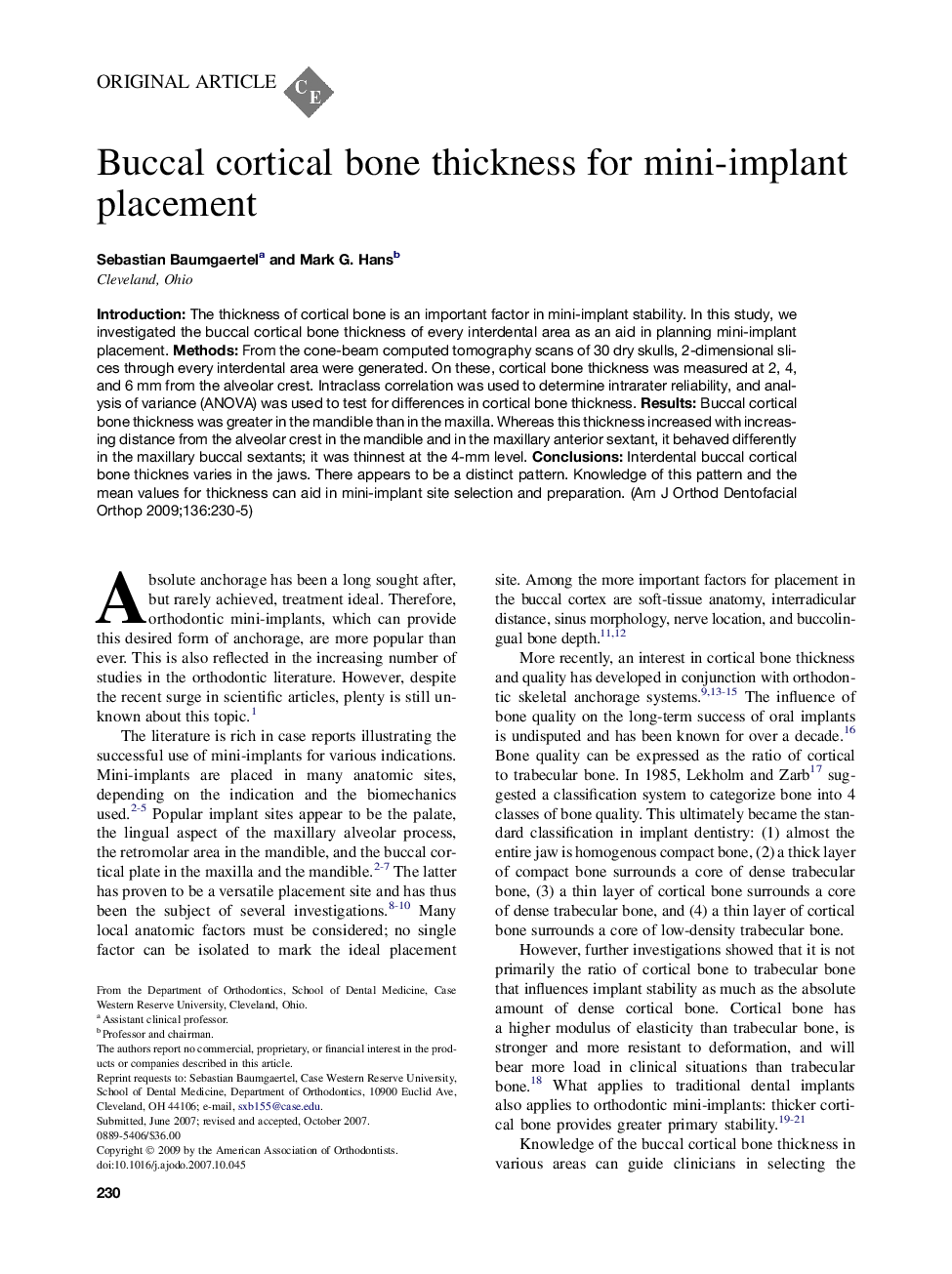| Article ID | Journal | Published Year | Pages | File Type |
|---|---|---|---|---|
| 3118849 | American Journal of Orthodontics and Dentofacial Orthopedics | 2009 | 6 Pages |
IntroductionThe thickness of cortical bone is an important factor in mini-implant stability. In this study, we investigated the buccal cortical bone thickness of every interdental area as an aid in planning mini-implant placement.MethodsFrom the cone-beam computed tomography scans of 30 dry skulls, 2-dimensional slices through every interdental area were generated. On these, cortical bone thickness was measured at 2, 4, and 6 mm from the alveolar crest. Intraclass correlation was used to determine intrarater reliability, and analysis of variance (ANOVA) was used to test for differences in cortical bone thickness.ResultsBuccal cortical bone thickness was greater in the mandible than in the maxilla. Whereas this thickness increased with increasing distance from the alveolar crest in the mandible and in the maxillary anterior sextant, it behaved differently in the maxillary buccal sextants; it was thinnest at the 4-mm level.ConclusionsInterdental buccal cortical bone thicknes varies in the jaws. There appears to be a distinct pattern. Knowledge of this pattern and the mean values for thickness can aid in mini-implant site selection and preparation.
